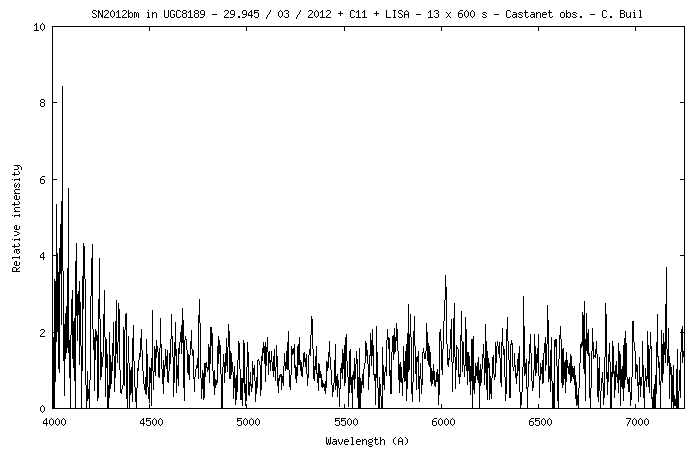First an image of host galaxy and SN2012bm:

Now the 2D spectrum - 2 hours exposure (after sky removal):

And the spectral profile:

The signal to noise is near 4 or 6 (detection limit). Object of magnitude 17 is probably
the faintest observable for me (D= 280 mm telescope), from my very light polluted observatory.
Under a good dark sky, a 35 microns slit and a moderate seeing (2 arcsec) we can expect detection limit near V=17.5
with a LISA and a 280 mm SC telescope.
A good 500 mm diameter telescope can reach 18.5 or more faintest for a good sky. Very faint SN are accessibles for
amateurs (but for these magnitudes - with a low scientific interest because the low SNR - but
the challenge and fun are exceptionnal).
See also my 2012 SN page: http://www.astrosurf.com/buil/supernovae/2012/
Christian Buil